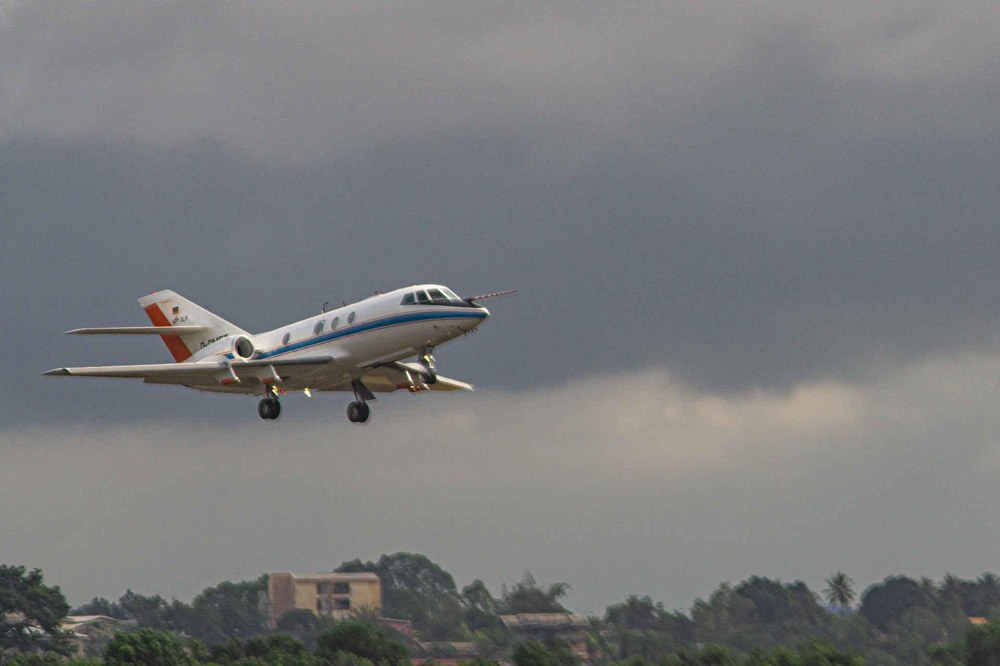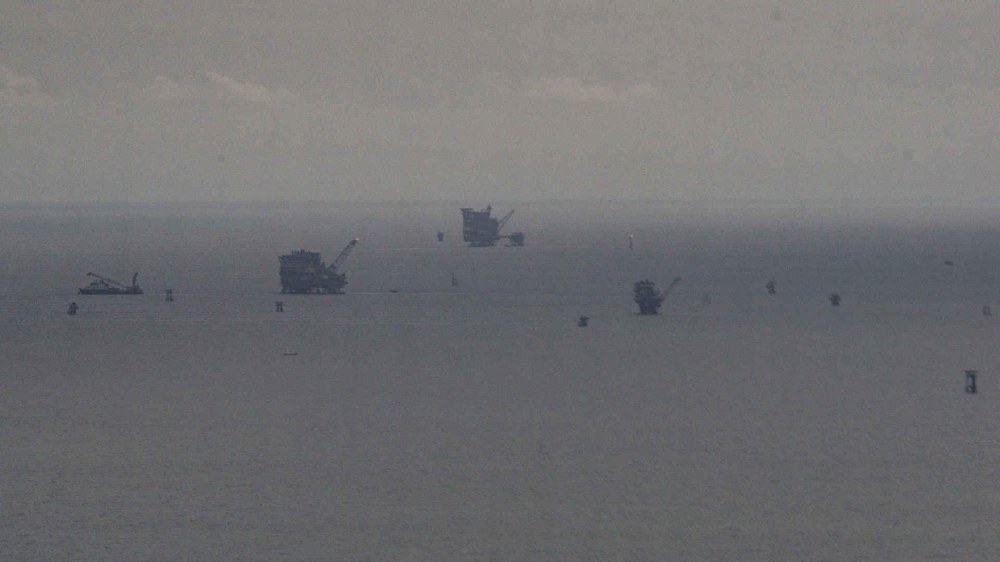DLR aircraft records methane levels off the coast of Central Africa



- Rapid measures to reduce methane concentration promise short-term success against global warming.
- The exact source strengths of methane, especially in the oil and gas industry, often remain unknown.
- Methane sources are now being recorded in detail as part of the International Methane Emissions Observatory (IMEO) on behalf of the UN Environmental Programme (UNEP).
- Detailed data relating to methane sources serve as a basis for appropriate countermeasures and monitoring.
- Focus: Earth observation, climate change
Methane is the second most important anthropogenic greenhouse gas after carbon dioxide. Due to its high climate impact, it is responsible for a quarter to a third of human-induced global warming since pre-industrial times depending on the climate model used. Worryingly, atmospheric methane concentrations have been rising at an accelerating pace in recent years, although the causes of this are not yet fully understood. Methane, however, breaks down much faster in the atmosphere than carbon dioxide. This offers the opportunity to rapidly lower the atmospheric methane concentration if decisive action is taken to significantly reduce human methane emissions in the next few years. At the COP 26 international climate conference in November 2021, over 100 countries signed up to the Global Methane Pledge initiated by the USA and the EU – a commitment to reduce global methane emissions by at least 30 percent by 2030 compared to 2020 levels by deploying voluntary measures. An important part of the pledge was that participating nations agree for their emissions to be recorded in detail according to the standards of the Intergovernmental Panel on Climate Change (IPCC). The German Aerospace Center (Deutsche Zentrum für Luft- und Raumfahrt; DLR) is involved in the METHANE-To-Go mission, which is funded by the UN Environmental Programme (UNEP). In September 2022, the DLR Falcon 20E research aircraft measured methane emissions from the oil and gas industry off the west coast of Central Africa from its base in Gabon.
"The global community needs worldwide initiatives such as the Global Methane Pledge in order to counteract climate change in a targeted and internationally coordinated way," says Anke Kaysser-Pyzalla, Chair of the DLR Executive Board. "Earth observation and the analysis of the data it gathers are vital for the development, monitoring and consistency of targeted measures. DLR uses innovative methods and instruments to provide the details and depth of data that are fundamental for successful climate protection measures. With the METHANE-To-Go mission, we are making an important contribution towards detecting leaks at oil and gas production sites, pipelines and LNG terminals."
In September 2022, DLR's Falcon research aircraft made flights from its base in Gabon to measure methane emissions from the oil and gas industry off the coast of Gabon and Angola. Aircraft measurements are essential to obtain a more detailed insight into methane emissions from individual oil and gas fields, as modern satellites can only provide general, inadequate data over the ocean and during periods of thick cloud cover at tropical latitudes. More detailed measurements of often unknown or underestimated methane emissions from the production and transport of oil and gas are the key to driving more efficient measures to reduce methane emissions together with the oil and gas industry.
"Overall, we are hoping to gain a better understanding of why the concentration of methane in the atmosphere has increased so much over the past decade, although it had stagnated for several years prior to that," says mission leader Anke Roiger of the DLR Institute of Atmospheric Physics. "In addition to natural sources of methane, we are particularly interested in anthropogenic sources from the energy, agriculture and waste sectors. We have to record these much more accurately in order to better understand how humans are contributing to the sharp increase in methane concentrations and to be able to advise the respective industries."
Low-altitude measurements over the ocean
Like many international DLR research flight campaigns, the METHANE-To-Go mission required detailed preparation and experienced research pilots. "For the flights in Central Africa, organising a suitable base at an airport with sufficient working facilities is just as much a challenge as obtaining the required permits for the numerous low-altitude flights across various national airspaces and, for this mission specifically, for the low-altitude flights in the vicinity of offshore installations," says lead pilot Michael Grossrubatscher from DLR's Flight Experiments facility. "Here, our many years of experience, especially with previous flights in Gabon, and the tight cooperation with the local oil and gas authorities in advance of the mission, helped us a lot." Between 30 and 500 metres above the ocean, the DLR Falcon takes measurements on the windward and leeward sides of the installations. This makes it possible to quantify the emissions of the plants under examination in detail. In addition to methane, the Falcon also records numerous other trace substances. This allows the research team to subsequently assign the observed methane emissions to different processes
Oil and gas production off the west coast of Central Africa
On the west coast of Central Africa, oil and gas production is spread over more than 800 kilometres across a wide variety of offshore installations. Different extraction techniques are used for offshore production in shallow water and for production in the deep sea, some of which is up to 150 kilometres from land. During the two weeks on site, the mission team succeeded in collecting emission data from all relevant regions. The installations and associated emissions can differ greatly, particularly due to the different ages and state of the existing installations.
Additional DLR activities for the UN Environment Programme
The METHANE-To-Go mission is one of DLR's contributions to the International Methane Emissions Observatory (IMEO) of the UN Environment Programme. DLR is also involved in measuring methane emissions from coal mining in Poland. Here, researchers from the DLR Institute of Atmospheric Physics, in cooperation with the Technical University of Braunschweig, successfully deployed a new type of helicopter-borne sensor in June 2022. DLR is also planning further measurements of methane emissions from the oil and gas industry in Oman next year, a region home to large-scale oil and gas production where no comparable measurements of the associated emissions have yet been carried out.
